From Thangka paintings to quality rugs, province is leveraging its heritage, history
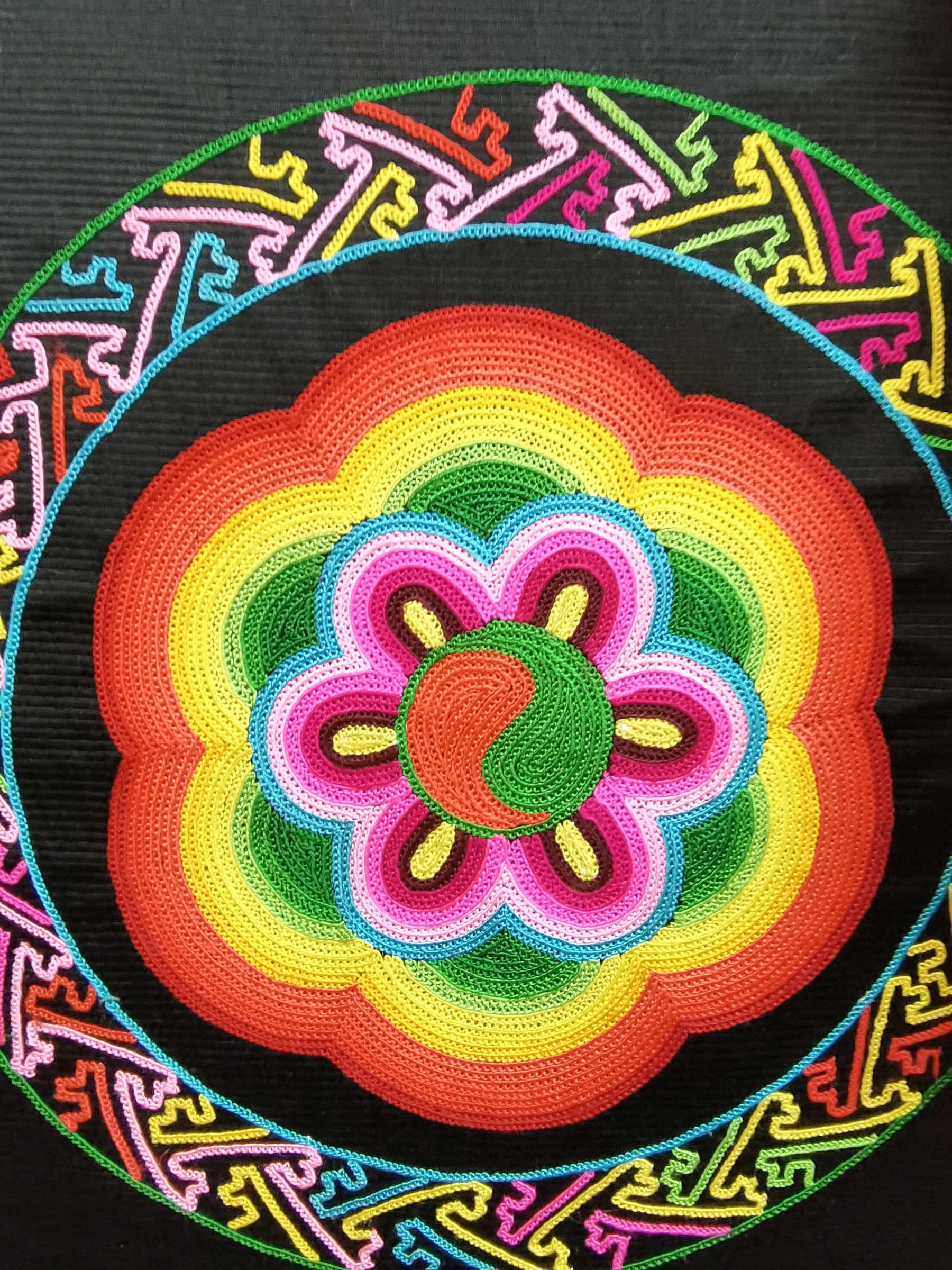
Would it be a surprise to learn that plush carpets underfoot at Dubai International Airport, on Carnival cruise ships, and in Las Vegas hotels often come from the Qinghai-Tibet Plateau?
Tibetan carpets are among the three most-famous traditional carpets in the world and have a history dating back 3,000 years. Prized for their fine wool, unique craftsmanship and exquisite designs, they enjoy global acclaim.
Based in Xining, Qinghai province, Shengyuan Carpet Group is one of China's largest Tibetan carpet manufacturers, and boasts a significant market share. The company combines the advantages of handwoven and machine-woven carpets to ensure product quality and aesthetics while increasing production efficiency.
Du Fei, deputy general manager of the projects department, recalls the company's humble beginnings. "Founded in 2007 with just over 20 employees, we survived fierce market competition by tackling complex craftsmanship and focusing on high-end, custom-made carpets, elevating 'Made in China' standards," he said.
READ MORE: Tibetan carpet sector weaves dreams
Today, the company's annual sales exceed 100 million yuan ($13.9 million), with products shipped to the Middle East, Europe, North America and Australia. The United States accounts for 60 to 70 percent of sales, which mainly go to high-end venues.
Production methods range from machine-woven, which imitates handmade rugs, to gun-tufted, or semi-handmade, to fully handwoven, with prices increasing manyfold as craftsmanship becomes more intricate.
Handwoven Tibetan carpets, most looking like vivid oil paintings, are highly prized. A 1-square-meter piece takes a craftsman roughly a year to complete, and usually fetches 50,000 yuan to 60,000 yuan for its vibrant colors and durability.
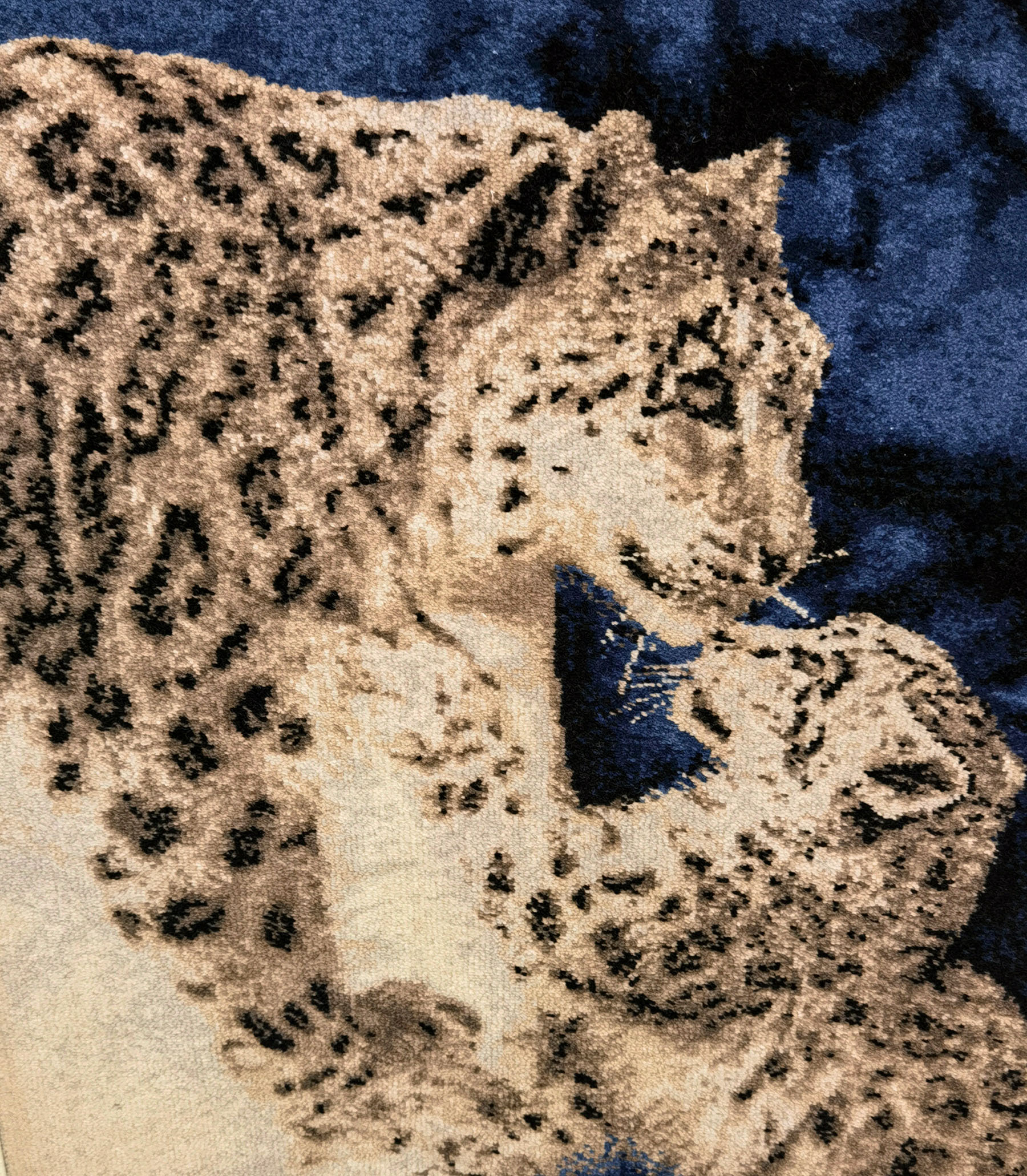
With high transportation costs due to Qinghai's deep inland location, handwoven carpets barely turn a profit, Du explained. "We persist out of a mission to preserve this intangible cultural heritage — Tibetan carpet weaving is the cultural root of our enterprise," he said.
In 2023, Shengyuan was designated a national demonstration base for productive protection of intangible cultural heritage, relying on the traditional Tibetan carpet-weaving technique originating from Jiaya village in Xining. Its inheritors are mainly engaged in training artisans.
Of the company's 300-plus employees, over 200 are from surrounding villages, including many ethnic groups such as the Tibetan and Tu. About half of them have mastered the hand-weaving skills.
"Instead of working far from home, I now earn nearly 5,000 yuan a month here and can still care for my family," said 42-year-old weaver Zhu Cunfeng, smiling.
Tibetan carpets utilize premium raw materials like sheep wool and yak wool sourced in Qinghai. The designs include not only auspicious traditional Tibetan motifs, but also new artistic inspirations such as Qinghai Lake, the Kunlun Mountains, snow leopards, depictions of herders' lives, and cultural landmarks.
Du said the yarn used in premium handwoven carpets is only one-eighth the thickness of traditional Tibetan carpets, making them more durable and refined. The company has also developed a color library with nearly 40,000 hues, ensuring vibrant and natural color rendering.
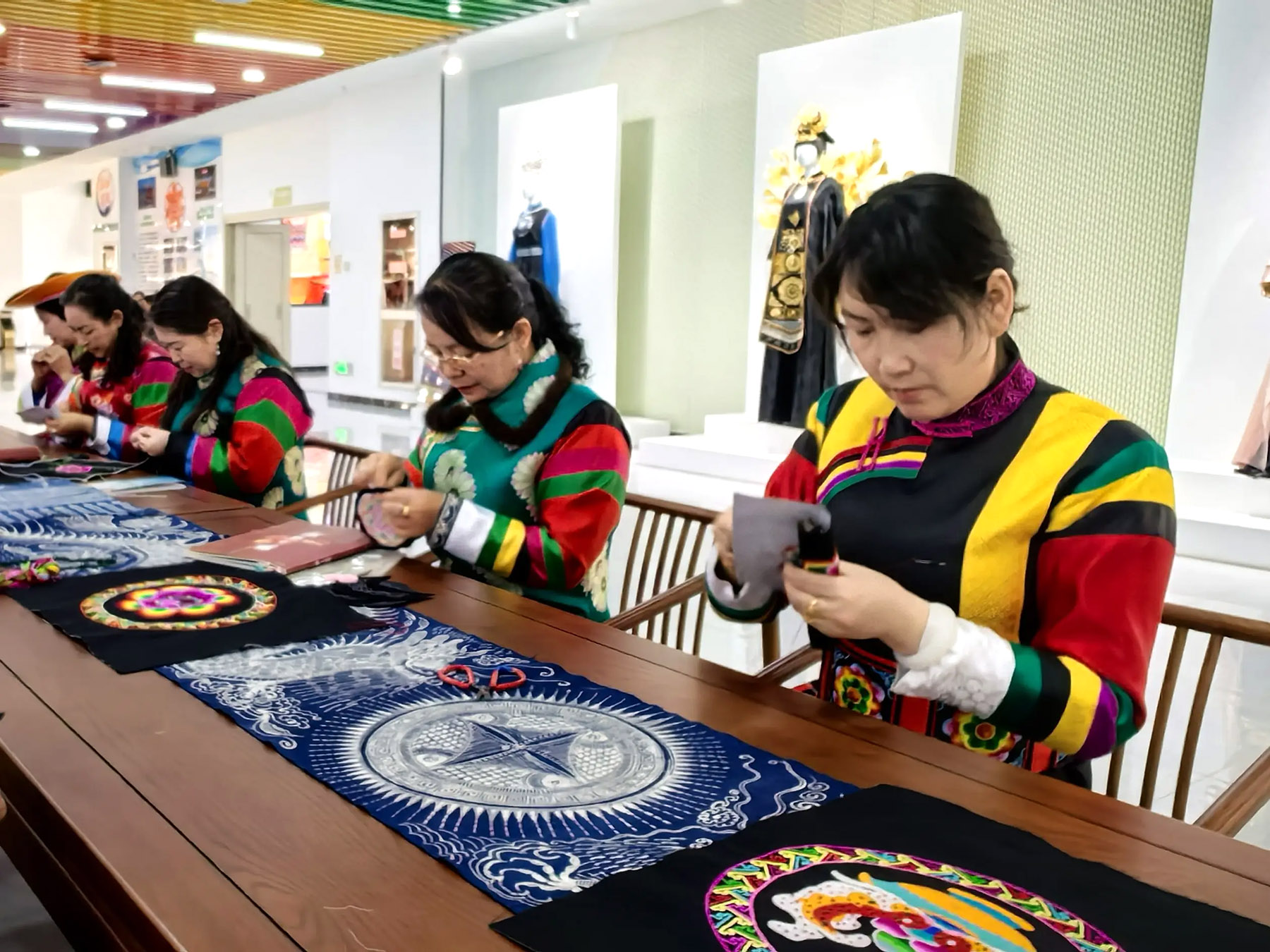
Wedding legacy
"Every young girl in the Tu ethnic group knows how to do Pan embroidery. Only by doing so can she make her wedding costume by hand when she gets married," said Zhang Zhuoma Shijie, as she explained the cultural inheritance of Pan embroidery skills.
"I started learning when I was 14 or 15 years old and made my own wedding costume when I was 19," said the 58-year-old inheritor of the intangible cultural heritage of Pan embroidery.
Zhang is also the director of the Pan Embroidery Garden in Banyan village, Huzhu Tu autonomous county in Haidong. The Tu people worship the sun and rainbows, and the county is known as the "Hometown of Rainbows". Their costumes are characterized by colorful sleeves and Pan embroidery.
Pan embroidery uses two threads — one coiling, one stitching — made without a frame and relying solely on hand movements, a technique impossible to replicate by machine. Founded in 2017, the Pan Embroidery Garden employs over a dozen senior embroiderers aged 63 to 73, each earning over 10,000 yuan annually.
Known for its bright colors, the classic pattern of Pan embroidery resembles sunflowers (though it is not a literal sunflower), symbolizing a peaceful, auspicious, happy and beautiful life.
Today, Pan embroidery adorns scarves, laptop bags, pillows, coasters and other fashion products. It is sold domestically and abroad through the Qing embroidery — or embroidery of Qinghai — workshop network.
The Pan method comes under the umbrella of Qing embroidery, which encompasses 17 categories and 29 stitching techniques, including Tibetan embroidery, and pile embroidery in Huangzhong district of Xining.
It originated during the Qin and Han dynasties (221 BC-AD 220) along the southern route of the Silk Road and integrates elements from the Central Plains and plateau culture.
The Qing embroidery workshop network consolidates experience, displays, training, production, and sales, and serves as a vital platform for preserving ethnic embroidery, boosting employment, and linking heritage protection with rural vitalization.
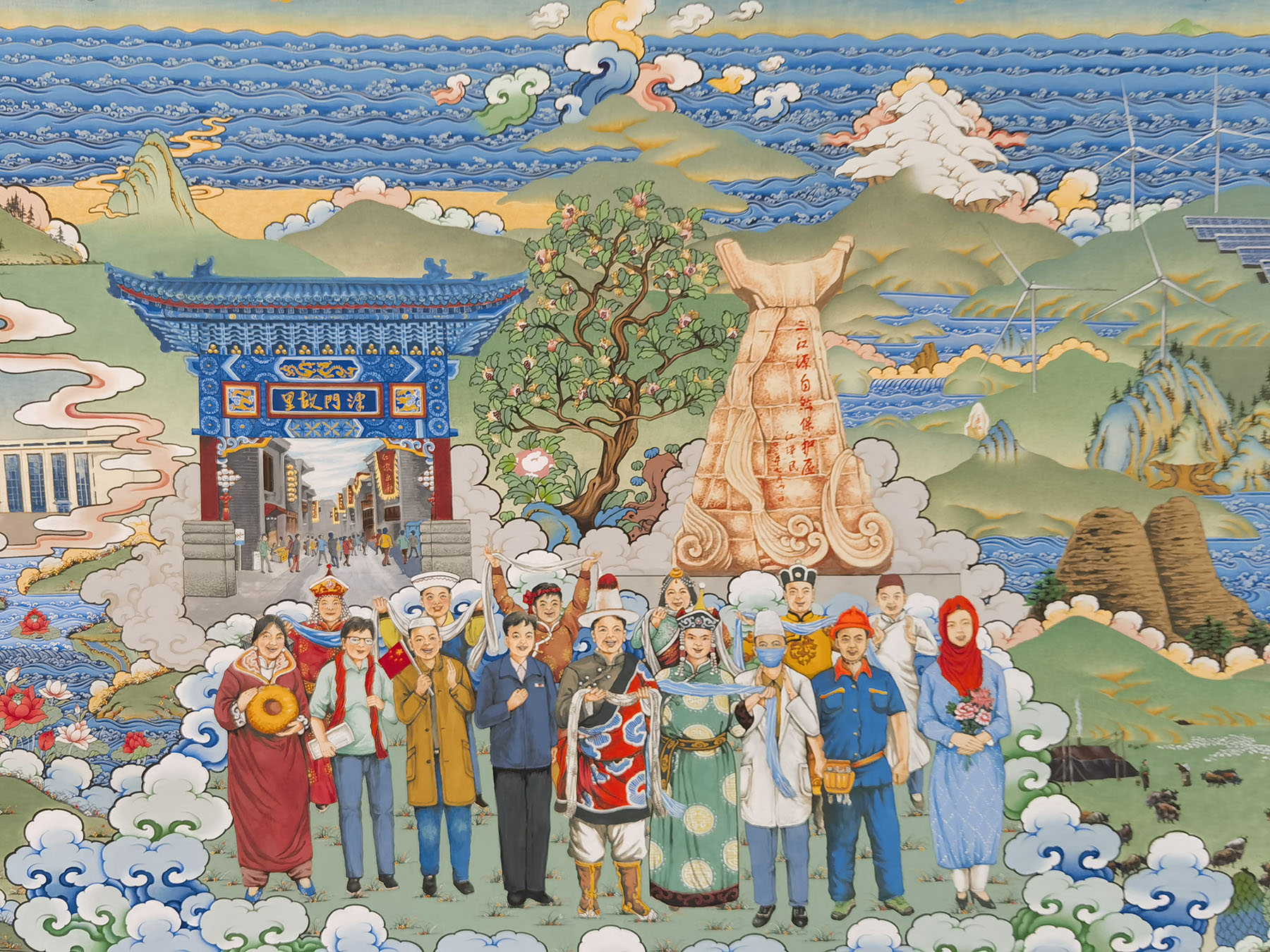
Youthful innovation
Tongren city in the Huangnan Tibetan autonomous prefecture, 160 km southeast of Xining, is known as the "Hometown of Regong Art".
Encompassing Thangka painting, murals, clay sculpture, and other aspects, Regong art was inscribed on China's national intangible heritage list in 2006.
Thangka, an iconic Regong art form, uses mineral pigments like cinnabar and coral, painted on cotton cloth and mounted on silk. Traditionally depicting Tibetan Buddhist stories and history, often with peony motifs, modern Thangkas now incorporate landscapes, architecture, and daily life, with innovative techniques.
Dorje Tsering, office director of Renjun Regong Art Training Institute, said its founder Xiawujiao, as a master inheritor, has trained over 560 Thangka artists from Tibetan, Tu, Han, and Mongolian backgrounds.
The institute currently has 43 students and offers them free training and accommodation. It also houses Qinghai's first private Regong art museum. Built between 2009 and 2013 with a 10 million yuan investment, it draws visitors from around the world every year.
In its Thangka studio, two large works stand out.
"They were created to mark 15 years of Tianjin's aid to Qinghai, and timed for 2025. Each is 2.5m long and 1.5m wide," Dorje said.
One of them depicts landmark landscapes and buildings, including Tianjin's Panshan Mountain and Qinghai's Sanjiangyuan National Park, as well as scenes of Tianjin's educational and medical assistance to Qinghai. The other one shows the sister regions of Qinghai's Huangnan Tibetan autonomous prefecture and Tianjin's Binhai New Area and their natural and cultural landmarks.
Over 10 artists have worked on them for seven months, with completion scheduled for late August, Dorje said.
"Compared with traditional Thangka, this more modern style allows for greater freedom of expression," said 23-year-old Gatso while concentrating on painting one of the Thangkas. "I have been studying here for just two years and hope to be recognized by my teacher as soon as possible."
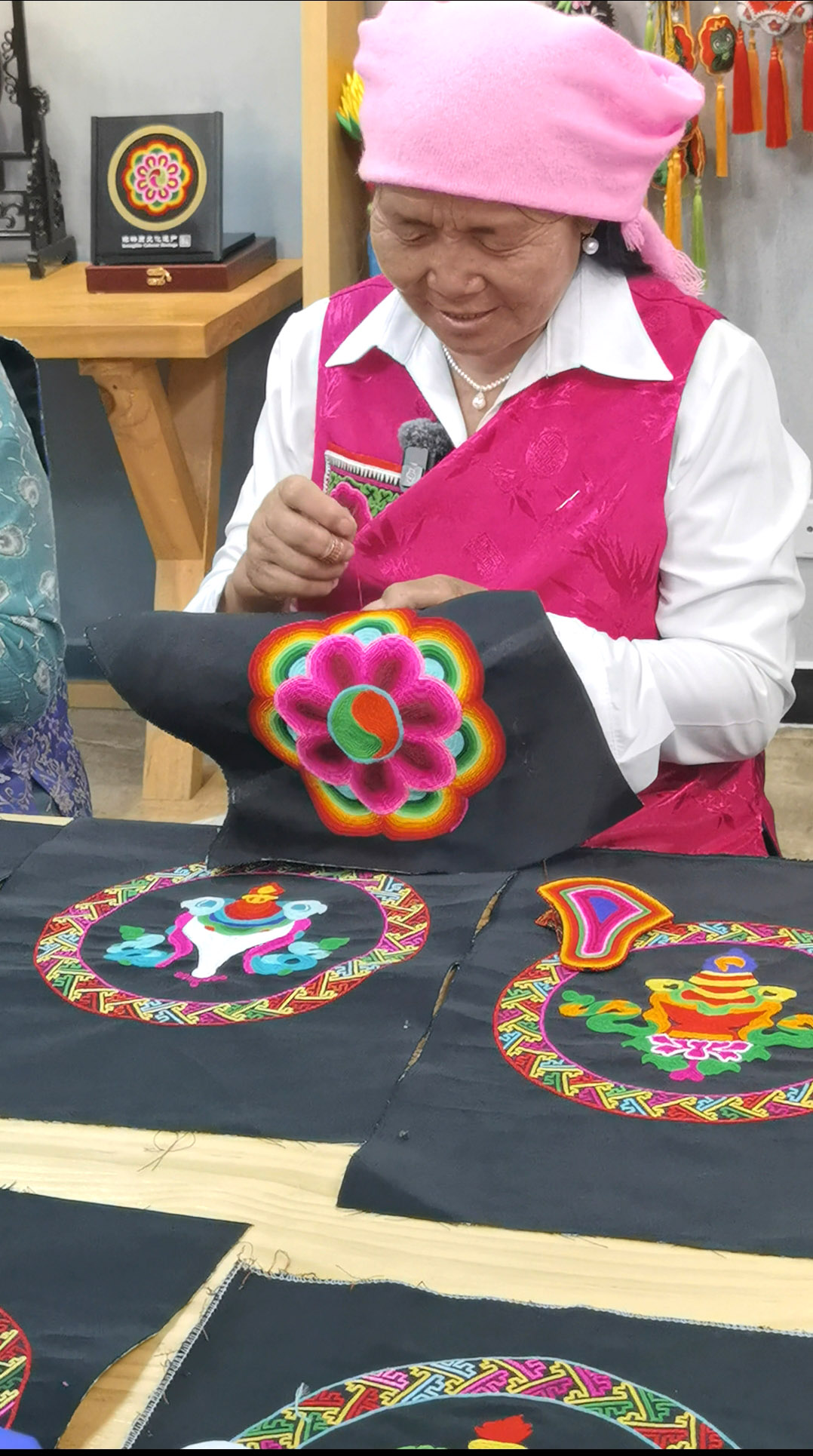
He is from the Hainan Tibetan autonomous prefecture. After graduating from high school, he stayed at home for a few years. When he heard that there were free learning opportunities at the institute, he went there.
Sonam Gyaltso, 25, works alone in the studio next door, sculpting a leopard out of red clay.
"I'm local. I came here as an apprentice eight years ago after graduating from high school. Now I have a monthly salary of over 4,000 yuan. Five of my 40 high school classmates now study Regong art," he said.
Tongren has built a provincial-level Regong culture industrial park in Qinghai, bringing together 25 large painting academies and 356 cultural enterprises engaged in Regong art, said Geng Bin, deputy head of Qinghai's Culture and Tourism Department.
The painting academies operate under the "painting academy plus farmers plus base" model, and are mainly engaged in research, creation of works, training, production, sales, exhibitions, collections, and import and export business. They offer free training, accommodation, and employment, and have boosted annual per capita income by over 60,000 yuan.
ALSO READ: Weaving preservation with tradition
To expand the market, the government of Tongren has set up over 200 sales points for Regong art in cities such as Beijing, Shanghai and Tianjin. Tongren has also established a center for promoting Regong art in the 798 Art Zone in Beijing to enhance the influence and popularity of the Regong art brand.
The works produced there are exported to Japan, Thailand, South Korea, Malaysia, France, India, Nepal and other countries.
By 2024, Tongren's cultural sector employed 24,000 people — up 8,600 from 2023 — and earned 454 million yuan in revenue, Geng said.
"Regong", which means "Golden Valley" and "where dreams come true" in Tibetan, lives up to its name as countless young artists chase their aspirations.
Contact the writer at wuyanbo@chinadaily.com.cn


